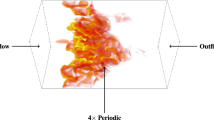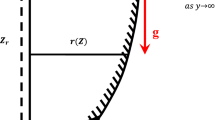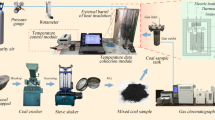Abstract
IT has been reported previously that flame gases resulting from the combustion of moist carbon monoxide – air and moist hydrogen – air mixtures attain higher temperatures than those resulting from the combustion of dry mixtures1,2. The temperatures were measured by means of very thin quartz-covered platinum-rhodium wires of overall diameter 0.0005 in. immersed in the flame gases just above the inner cone. The mixtures which were fed to the burner were on the weak side of the theoretical mixtures, and for any given combustible gas content the temperatures of the moist mixture flame gases were of the order of 50° C. higher than those of the dry mixture flame gases.
This is a preview of subscription content, access via your institution
Access options
Subscribe to this journal
Receive 51 print issues and online access
$199.00 per year
only $3.90 per issue
Buy this article
- Purchase on SpringerLink
- Instant access to full article PDF
Prices may be subject to local taxes which are calculated during checkout
Similar content being viewed by others
References
David and Pugh, NATURE, 140, 1098 (1937).
David and Mann, NATURE, 150, 521 (1942).
Author information
Authors and Affiliations
Rights and permissions
About this article
Cite this article
DAVID, W., MANN, J. Influence of Water Vapour upon the Combustion of Hydrocarbon Mixtures. Nature 151, 392 (1943). https://doi.org/10.1038/151392a0
Issue date:
DOI: https://doi.org/10.1038/151392a0



